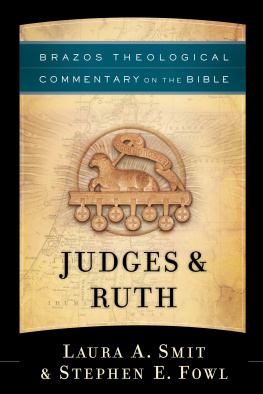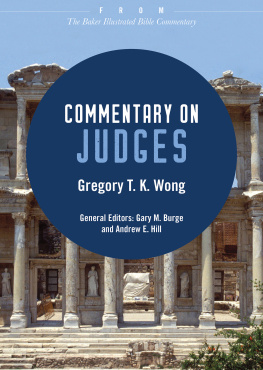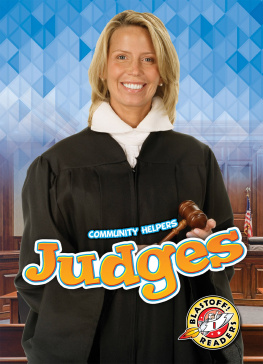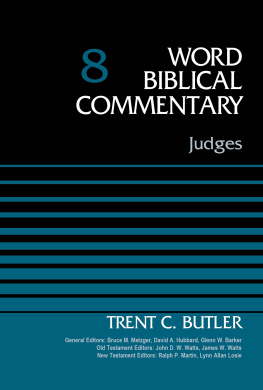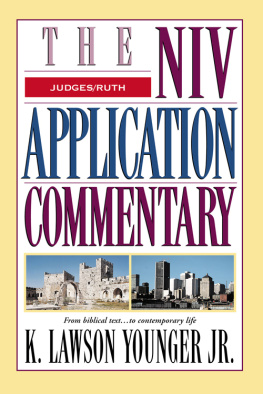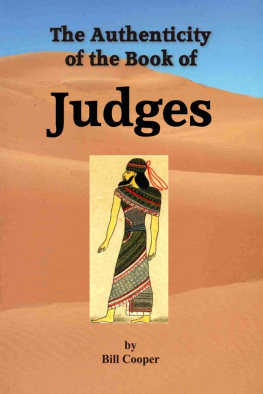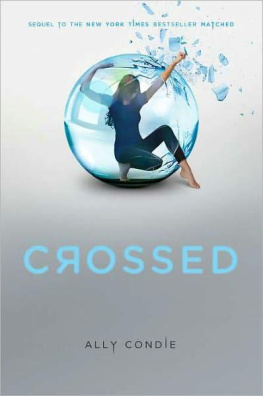Copyright 2009 by SAGE Publications, Inc.
All rights reserved. No part of this book may be reproduced or utilized in any form or by any means, electronic or mechanical, including photocopying, recording, or by any information storage and retrieval system, without permission in writing from the publisher.
For information:
 | SAGE Publications, Inc.
2455 Teller Road
Thousand Oaks,
California 91320
E-mail: | SAGE Publications India Pvt. Ltd.
B 1/I 1 Mohan Cooperative
Industrial Area
Mathura Road, New Delhi 110 044
India |
SAGE Publications Ltd.
1 Olivers Yard
55 City Road
London EC1Y 1SP
United Kingdom | SAGE Publications
Asia-Pacific Pte. Ltd.
33 Pekin Street #02-01
Far East Square
Singapore 048763 |
Printed in the United States of America
Library of Congress Cataloging-in-Publication Data
Spohn, Cassia.
How do judges decide?: the search for fairness and justice in punishment/Cassia Spohn.2nd ed.
p. cm.
Includes bibliographical references and index.
ISBN 978-1-4129-6104-2 (pbk.)
1. Sentences (Criminal procedure)United States. 2. PunishmentUnited States. 3. Judicial processUnited States. I. Title.
KF9685.S68 2009
345.73077dc22 2008036879
This book is printed on acid-free paper.
08 09 10 11 12 10 9 8 7 6 5 4 3 2 1
| Acquisitions Editor: | Jerry Westby |
| Editorial Assistant: | Eve Oettinger |
| Production Editor: | Carla Freeman |
| Copy Editor: | Carol Anne Peschke |
| Typesetter: | C&M Digitals (P) Ltd. |
| Proofreader: | Scott Oney |
| Cover Designer: | Ravi Balasuriya |
| Marketing Manager: | Christy Guilbault |
PREFACE
I n the minds of many Americans, the word sentencing evokes an image of a solemn and slightly mysterious process in which a wise, fair, and impartial judge determines the appropriate sentence for each offender who has been convicted of a crime. In this view, the judge deliberately fashions a sentence that reflects the facts and circumstances of the case, the background and blameworthiness of the offender, and the judges own philosophy of punishment. The judge uses his discretion to choose from a continuum of sanctions that range from life imprisonment or possibly death at one end to probation at the other, with many different sanctions in between. According to this view, the sentences meted out by judges are appropriate, unbiased, and just.
The reality of the sentencing process is somewhat different. The sentences imposed on offenders convicted of crimes in state and federal courts are the result of a collaborative exercise involving legislators and criminal justice officials other than the judge. The judge plays a significant and highly visible role in the process, but other officials play important supporting roles. In some jurisdictions, the judge retains discretion to tailor sentences to fit individuals and their crimes, whereas in other jurisdictions the judges options are constrained by sentencing guidelines that prohibit consideration of the offenders background characteristics or by mandatory minimum sentencing statutes that dictate the sentence to be imposed. The sentences that result from this process may not reflect a coherent philosophy of punishment or a reasoned assessment of crime seriousness and offender culpability. Similarly situated offenders convicted of comparable crimes may be sentenced differently, offenders convicted of different crimes may get the same sentence, and the sentence imposed may depend on the offenders race, ethnicity, gender, or social class.
The sentencing reforms enacted in the past 30 years were designed to ameliorate these problems. They were designed to bring order to a system of sentencing characterized as irrational, lawless, and desperately in need of improvement (Frankel 1972a). Reformers challenged the principles underlying the indeterminate sentence and called for changes designed to curb discretion, reduce disparity and discrimination, and achieve proportionality and parsimony in sentencing. A number of states adopted determinate sentencing policies that offered judges a limited range of sentencing options and included enhancements for use of a weapon, presence of a prior criminal record, or infliction of serious injury. Other states and the federal government adopted sentence guidelines that incorporated crime seriousness and prior criminal record into a sentencing grid that judges were to use in determining the appropriate sentence. Other reforms enacted at both the federal and state level included mandatory minimum penalties for certain types of offenses, three-strikes-and-youre-out laws that mandated long prison terms for repeat offenders, and truth-in-sentencing statutes that required offenders to serve a larger portion of the sentence before being released.
Although the reforms enacted in the past three decades did transform the sentencing process in the United States, the degree to which they improved the process is debatable. Advocates of sentencing reform contend that the changes enacted in the past three decades have resulted in more punitive, more effective, and fairer sentence outcomes. Critics of the sentencing reform movement assert that although sentences today are definitely harsher than they were in the past, attempts to structure the sentencing process and constrain judicial discretion did not produce the predicted reduction in crime or eliminate unwarranted disparities in sentencing.
This book provides a comprehensive overview of the sentencing process in the United States. We begin with a discussion of the goals or purposes of sentencing. allocation or distribution of punishment, that is, according to each theory, who should be punished and how much should they be punished? Using hypothetical cases, we show that the different theoretical perspectives would not necessarily produce the same sentence outcomes.
alternatives to incarceration: probation, boot camps, house arrest and electronic monitoring, community service, and monetary penalties. We explain that a jail or prison sentence is an option in most cases and that imprisonment is required by mandatory minimum sentencing statutes for certain types of offenders and certain types of crimes. We discuss the differences between indeterminate and determinate sentences and provide a brief introduction to presumptive sentencing guidelines. We also explain that the sentences imposed on offenders actually result from a collaborative exercise that involves decision makers other than the judge. We show how sentences are shaped by decisions made by state legislators, prosecutors, jurors, corrections officials, and appellate court judges.






